Introduction

The similarities between the two are many. Both cost around Rs 7 lakhs, come with 'all-black' styling, and have liquid cooled twin cylinder engines that masquerade as air cooled units, you know, just to trick you into believing these have old world charm. These are also both low slung, laid back and ideal upgrades for various Royal Enfield owners.
On the left corner then is the Harley Davidson Street 750. It's been on the market for a while, mostly unchanged. But, over the years, it has seen its poor brakes being upgraded to ones that work. And now these get ABS as well.
On the right is an Oriental kid. But, the Kawasaki Vulcan S looks American, much like the Harley. And that’s because that's where the majority of the cruiser audience is. And, in Japan. And now, also in India.
There is, however, one crucial difference between the two. The Harley - in old school style - runs a V-twin. The Kawasaki, on the other hand, comes with a parallel twin motor. So, not only do these bikes sound different, they feel different when on the move as well.
And, there's more...
Stealth brotherhood

But, first let's just get design out of the way first. Being all-black, or mostly all-black, neither bike really has eyeballs grabbing quality. But, if you do happen to spot them, you'd end up looking at the Vulcan more.
It's the longer, heftier looking bike. And it's new. It also doesn't have any chrome whatsoever. But, it has a side-mounted monoshock to kick-start conversations. And apart from the boring looking clocks and average looking switchgear, those conversations are all positive.
Things begin on a positive note for the Street 750 as well. The V-Twin engine really is an attention grabber. And then there's the twin exhaust and the H-D logo, all of which buyers in this class will appreciate.
But, like the Vulcan, the Harley too has its shortcomings too. The chrome on the Street 750 tends to blacken. The brake calipers tend to lose paint, and its switchgear looks and feels average as well.
Besides, the Vulcan offers more value than the Street. The Street gets no real features or technology to speak of – barring liquid cooling, fuel injection and ABS. The Kawasaki, however, gets a proper trip computer, adjustable clutch and brake levers, a usable pillion seat, and radial tyres front and back. All this is in addition to liquid cooling, fuel injection and ABS, of course.
Non-identical twins

Now, like we said at the start, the biggest difference between these two bikes is in their engines. Yes, both the Street 750 and the Vulcan S run liquid cooled, fuel injected, twin-cylinder engines with none of the modern electronic bits like ride-by-wire or riding modes.
But, the Vulcan in typical Japanese style is a smooth, easy revving parallel twin that loves flirting with the redline. It has a light and snatchy throttle response and it’s lovely to ride between 3,000-5,000rpm mainly on account of the way it sounds. But, if it’s absolute performance you seek, then you must rev it close to 10k before every upshift.

The Harley’s higher displacement v-twin sounds loud and brash from the word go. And, it has that classic wake-up-the-neighbours firing up characteristic – endearing when you own the bike; appalling if your neighbour does. The v-twin also has a portly mid-range, which makes the 750 feel peppier almost all the time. It also has livelier and more predictable throttle responses.
But then there’s the gearbox. The 6-speed on the Street, like most Harleys is a clunky ‘box. We didn’t experience many false neutrals, but it does shift into the first as if it were hammered in. The Vulcan is smoother, more precise and lighter with its shifts. It feels like any Japanese street bike in that sense - unobtrusive, but also devoid of character. Which the Harley, along with the engine heat, has by the bucket load.
Peg scrappers

The Street 750 is also the better handling motorcycle in this test. It is more agile, quicker to respond to steering inputs, and it handles quick direction changes with the poise and deftness its H-D brethren can’t even begin to fathom. And along with that eager engine, the Street 750 is clearly the more fun to ride motorcycle here.
But, it has peg-scrapping issues. Corner with vigour, and the footpegs will ground itself silly even before your world begins to tilt. This happens even when you go around a tight roundabout or make a U-turn. As you can figure, it’s terribly irritating. But, if you are an optimist, you could also see it as a safety net. You see, the Harley runs cross-ply tyres which are now unheard of not only in the price range the Street operates in, but also in significantly cheaper motorcycles.

Radials are better. And the Vulcan S gets them as standard on both ends. So, the Kawasaki leans more into bends. The fact that it has slightly higher placed forward set footpegs helps as well. But, the difference in cornering clearance between the bikes isn’t stark. So, the Vulcan’s footpegs too scrape sooner than one would like. It is also the slower steering motorcycle here, caused by its lazier steering geometry as well as the longer wheelbase. The pulled back handlebar doesn’t help its case here either.
Now as to the ride quality, it is somewhat impacted by the dramatically lowered rear suspension that Kawasaki has effected to complete the cruiser look. As a result, it has only 80mm of travel. That means the Vulcan rides fine only on mildly broken tarmac and average sized speed breakers. As the road begins to undulate more severely, or as the speed breakers begin to get taller, or even if you end up riding with a pillion, there will be quite a bit of bottoming out, belly scrapping and discomfort.
The Harley’s ride on its twin coil-over rear dampers is marginally better. You still have to constantly look for bumps and depressions in the road to save your back from being whacked hard, but the impact is less severe and not as frequent as on the Vulcan.
Our take

The Street 750 and the Vulcan S cost almost the same, and are similarly specced for the most part. Now, while the Kawasaki is more feature-rich and more current with its technology, the Harley is the more fun to ride motorcycle.
But, as our points clearly indicate, the Kawasaki is the more complete motorcycle, and is easier to ride and live with on an everyday basis. And, therefore, it is our winner.
As for the Harley, well, it is like your neighbour’s playful dog. Great to spend an evening playing catch with, but then you are done, you can just head home not having to worry about feeding it, walking it or taking it to the vet.
Photography by Kapil Angane
Final Scores
| Parameters | Max Points | Kawasaki Vulcan S | Harley-Davidson Street 750 |
|---|---|---|---|
| Rank | 1 | 2 | |
| Looks & styling | 10 | 6.5 | 6.5 |
| Ergonomics & Quality | 10 | 7 | 6 |
| Features & Tech | 10 | 6.5 | 5 |
| Engine & Gearbox | 10 | 7.5 | 7 |
| Performance | 10 | 7.5 | 7.5 |
| Ride Quality | 10 | 5 | 5.5 |
| Handling & Braking | 10 | 7 | 6.5 |
| Fuel Efficiency | 10 | 4.5 | 4 |
| Price & Warranty | 10 | 5.5 | 5 |
| Desirablility | 10 | 6 | 7 |
| Total | 100 | 63 | 60 |
Specifications
| Make | Kawasaki | Harley-Davidson |
|---|---|---|
| Model | Vulcan S | Street 750 |
| POWER TRAIN | ||
| Engine Type | Liquid-cooled | Liquid-cooled |
| Capacity | 649cc | 749cc |
| Max Power | 59.5bhp at 7500rpm | 53bhp at 8500rpm |
| Max Torque | 63Nm at 6600rpm | 59Nm at 6500rpm |
| Gearbox | 6-speed | 6-speed |
| Fuel Efficiency | 22kmpl | 20kmpl |
| CYCLE PARTS | ||
| Supension F | Telescopic | Telescopic |
| Suspension R | Offset Monoshcok | Dual spring |
| Brakes F | 300mm disc with ABS | 292mm disc |
| Brakes R | 250mm disc | 260mm drum |
| Tyre F | 120/70-18 (Tubeless) | 100/80-17 |
| Tyre R | 160/60-17 (Radial) | 150/70-15 |
| MEASURES | ||
| Fuel Tank | 14 litres | 13.10 litres |
| Wheelbase | 1405mm | 1520mm |
| L x W x H | 2310mm x 855mm x 1090mm | 2215mm x 7815mm x 1070mm |
| Kerb Weight | 235 kg | 223 kg |
| COST | ||
| Price (on-road, Mumbai) | Rs 6,55,924 | Rs 6,77,890 |
Gallery
1/41
Kawasaki Vulcan S vs Harley-Davidson Street 750
Double Tap to Zoom











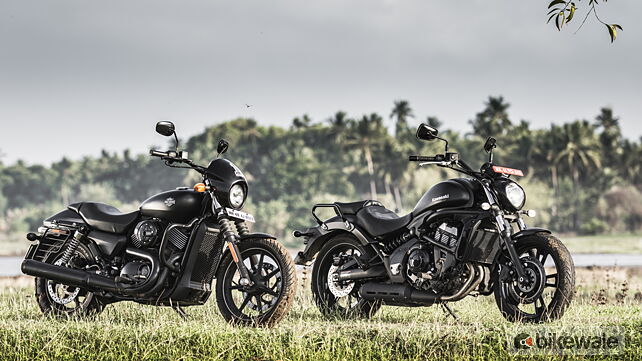












![Harley-Davidson Street 750 [2018-2019] Image Harley-Davidson Street 750 [2018-2019] Image](https://imgd.aeplcdn.com/272x153/bw/models/harleydavidson-street.jpg?20190103151915&q=80)
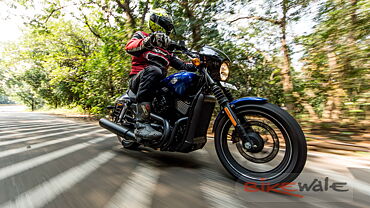
















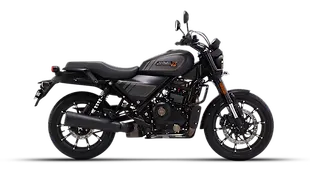
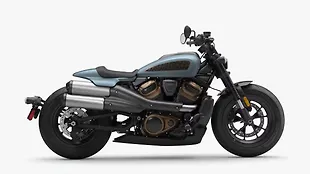
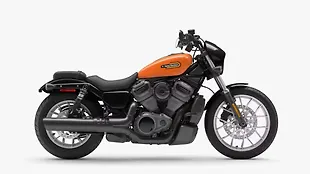





![KTM 390 Adventure X [2025] KTM 390 Adventure X [2025]](https://imgd.aeplcdn.com/272x153/n/cw/ec/190885/390-adventure-x-2025-right-side-view.jpeg?isig=0&q=80)